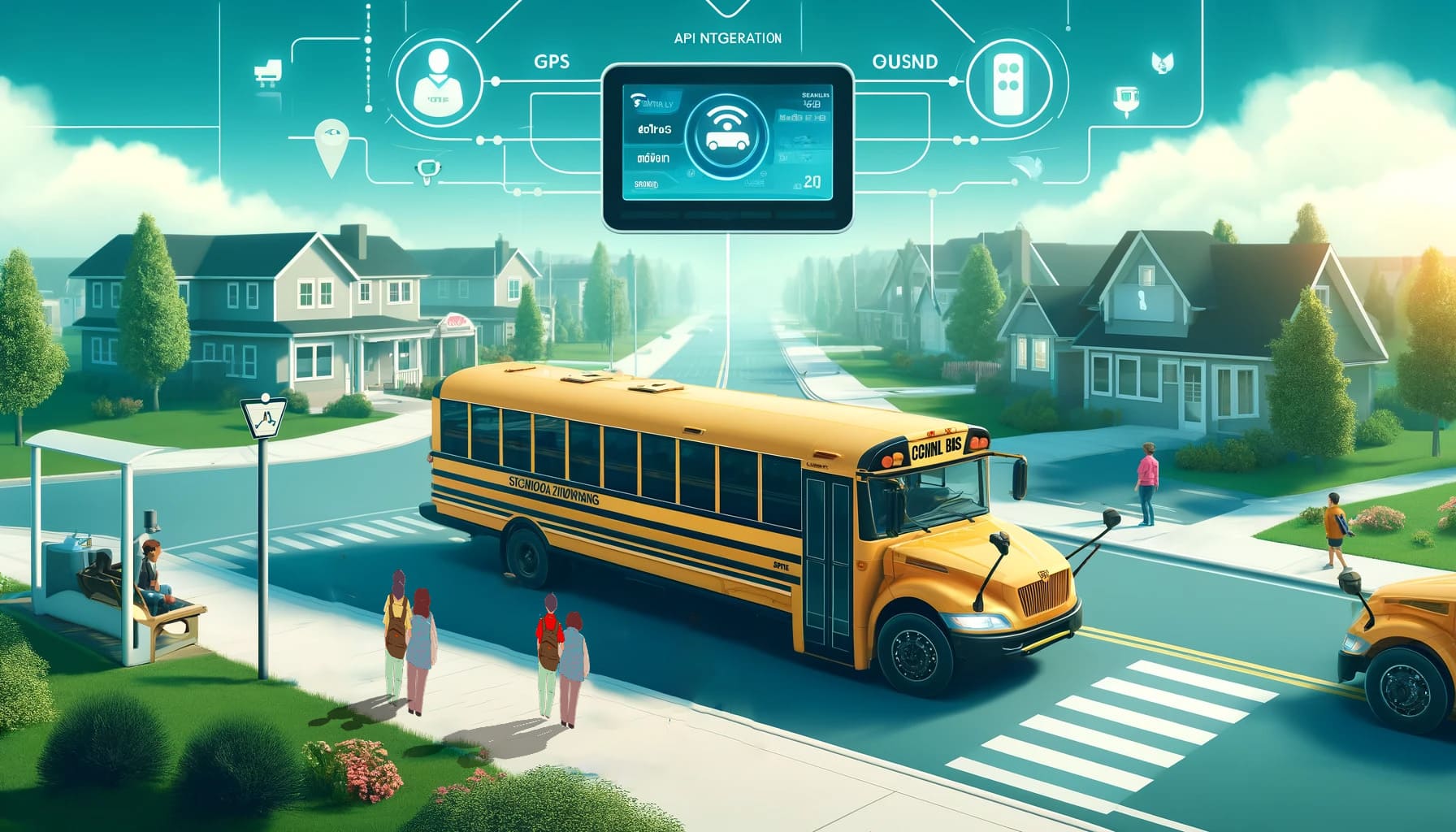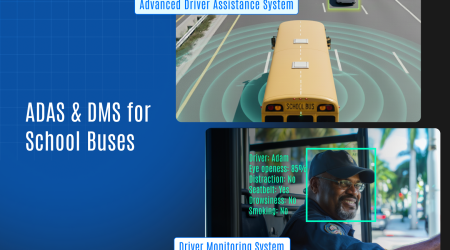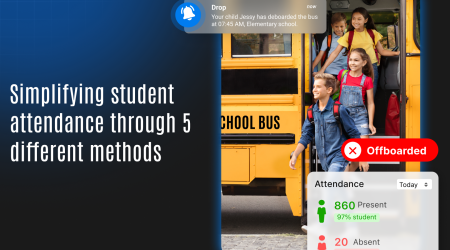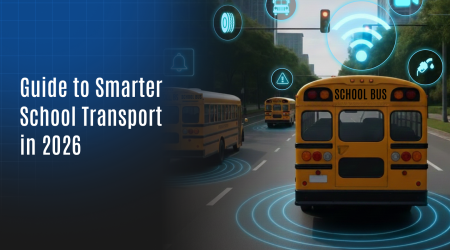Seamless API Integration for Smooth Operations in School Bus Monitoring

School bus monitoring software is essential for ensuring the safety and efficiency of student transportation. But what makes this software truly effective? Seamless API integration. Integrators are at the forefront of this technology, offering solutions that bring unparalleled ease and functionality to school bus monitoring. Let’s explore how seamless API integration transforms these systems and the benefits it brings.
Understanding API Integration
APIs, or Application Programming Interfaces, allow different software systems to communicate and share data. In the context of school bus monitoring, APIs enable the integration of various data sources—such as GPS trackers, route planners, and communication tools—into a single, cohesive system.
Why is Seamless API Integration Important?
Enhanced Safety:
By integrating real-time GPS tracking with emergency response systems, schools can ensure student safety during transit. If a bus deviates from its route or faces any issues, alerts are automatically sent to the concerned authorities.
Operational Efficiency:
Seamless API integration consolidates data from different sources, providing a comprehensive overview of operations. This helps in optimizing routes, reducing fuel consumption, and improving overall efficiency.
Better Communication:
Integration with communication tools allows real-time updates to parents and school administrators. They can receive notifications about delays, route changes, and emergencies instantly.
The Role of Integrators in School Bus Monitoring
Integrators specialize in creating seamless API integrations that ensure all components of a school bus monitoring system work together smoothly. Their expertise lies in understanding the unique needs of educational institutions and developing tailored solutions that enhance operational efficiency and safety.
Key Features of Integrators’ Solutions
Let’s dive deeper into the standout features provided by Integrators:
Real-Time Tracking:
Real-time tracking is the backbone of modern school bus monitoring systems. With GPS integration, Integrators offer continuous monitoring of bus locations and routes. This feature allows school administrators and parents to know the exact location of a bus at any given time. In the event of a delay or route deviation, immediate action can be taken to address the issue, ensuring student safety and minimizing parental anxiety. The integration of GPS data with the central monitoring system ensures that all stakeholders are kept in the loop with up-to-date information.
Automated Alerts:
Automated alerts are crucial for timely responses to emergencies or deviations from the planned route. Integrators provide systems that generate instant notifications if something goes wrong. For instance, if a bus deviates from its route, encounters unexpected traffic, or experiences mechanical issues, the system sends alerts to school administrators and relevant authorities. These alerts can be delivered via multiple channels such as SMS, email, or mobile app notifications, ensuring that the right people are informed promptly. This immediate notification system helps in quick decision-making, potentially averting crises and ensuring the safety of students.
Route Optimization:
Route optimization is essential for reducing operational costs and improving efficiency. Integrators use advanced algorithms to analyze various factors like traffic patterns, road conditions, and historical data to plan the most efficient routes for school buses. This not only ensures that buses arrive on time but also helps in saving fuel and reducing wear and tear on the vehicles. Efficient routing means less time spent on the road, leading to reduced operational costs and a smaller carbon footprint. The integration of real-time traffic updates further enhances this feature, allowing for dynamic adjustments to routes as needed.
Data Analytics:
Comprehensive data analysis is key to informed decision-making. Integrators’ solutions include powerful analytics tools that compile and analyze data from various sources. This data includes GPS tracking information, route performance, fuel consumption, and maintenance records. By analyzing this data, school administrators can identify patterns and trends, making it easier to optimize operations and address any recurring issues. Data analytics can also provide insights into driver behavior, helping schools implement training programs to enhance safety and efficiency. This level of detailed analysis supports proactive management and continuous improvement of the transportation system.
Parent Communication:
Keeping parents informed is vital for building trust and ensuring peace of mind. Integrators offer solutions that provide real-time updates to parents regarding bus schedules and delays. Parents can now get notifications about their child’s bus schedule, including arrival times at pick-up or drop-off points, delays, and emergencies. Through a dedicated mobile app, email, or SMS, these updates ensure parents have timely and accurate information. Moreover, this feature enhances communication, providing peace of mind and ensuring that parents stay informed every step of the way.Effective communication helps in reducing anxiety and fostering a sense of security among parents.
Case Study: Implementing Seamless API Integration
Let’s take a closer look at a real-world example of Integrators’ impact on a school district’s bus monitoring system.
Background: A large school district was facing challenges with its existing bus monitoring system. The system was fragmented, with GPS tracking, route planning, and communication tools operating independently. This lack of integration led to inefficiencies and safety concerns.
Solution: Integrators were brought in to develop a seamless API integration that would unify all these components. Here’s how they did it:
- Assessment: The team conducted a thorough assessment of the existing system to understand its shortcomings and the specific needs of the district.
- Integration: They developed custom APIs that allowed the GPS trackers, route planners, and communication tools to interact seamlessly. This integration ensured real-time data flow between all components.
- Testing: Extensive testing was carried out to ensure the integrated system functioned smoothly. This included simulating various scenarios to check the system’s response.
- Training: School staff were trained to use the new system effectively. This included workshops and hands-on sessions to familiarize them with the new features.
Results: The implementation of seamless API integration brought significant improvements:
- Increased Safety: Real-time alerts and tracking enhanced student safety. Any deviations or emergencies were promptly addressed.
- Operational Efficiency: Optimized routes reduced travel time and fuel consumption, leading to cost savings.
- Better Communication: Parents and administrators received timely updates, reducing anxiety and improving trust in the system.
Overcoming Challenges in API Integration
Implementing seamless API integration is not without its challenges. Here are some common obstacles and how Integrators tackle them:
Compatibility Issues:
Ensuring that different systems can communicate effectively can be challenging. Integrators conduct extensive compatibility tests to ensure smooth integration.
Data Security:
Protecting sensitive data is crucial. Integrators implement robust security measures, including encryption and secure access protocols, to safeguard data.
User Training:
For the integration to be effective, users must be comfortable with the new system. Integrators provide comprehensive training and support to ensure smooth adoption.
Future of API Integration in School Bus Monitoring
The future of school bus monitoring lies in advanced API integrations. As technology evolves, so do the possibilities for enhancing these systems. Here are some trends to watch:
- Artificial Intelligence: AI can further optimize routes and predict potential issues before they occur, enhancing efficiency and safety.
- IoT Integration: The Internet of Things (IoT) can connect more devices, providing even more data for comprehensive monitoring and analysis.
- Enhanced Analytics: Advanced analytics can provide deeper insights into operations, helping schools make more informed decisions.
Conclusion
Seamless API integration is revolutionizing school bus monitoring systems. Integrators are leading this change, providing solutions that enhance safety, efficiency, and communication. By unifying various components into a single, cohesive system, they also ensure smooth operations and peace of mind for schools and parents alike.


